
How to Use 16A AC BREAKER: Examples, Pinouts, and Specs
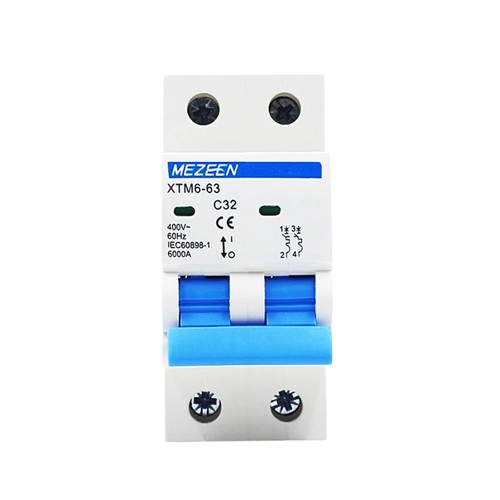
 Design with 16A AC BREAKER in Cirkit Designer
Design with 16A AC BREAKER in Cirkit DesignerIntroduction
The 16A AC Breaker (Manufacturer: AC, Part ID: BREAKER) is a protective device designed to safeguard electrical circuits by automatically interrupting the flow of current when it detects an overload or short circuit. This ensures the safety of connected devices and prevents potential damage to the circuit.
Explore Projects Built with 16A AC BREAKER
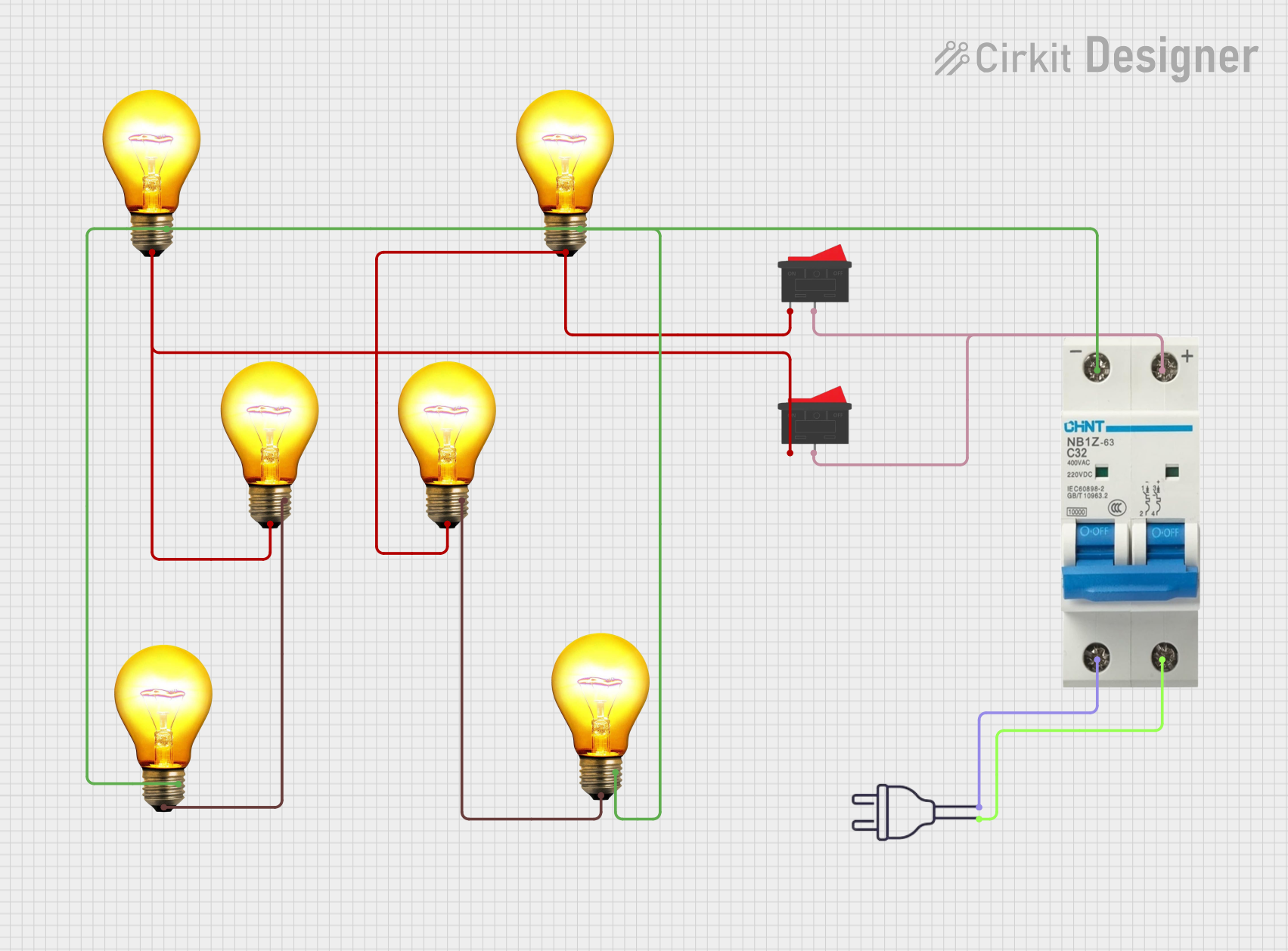
 Open Project in Cirkit Designer
Open Project in Cirkit Designer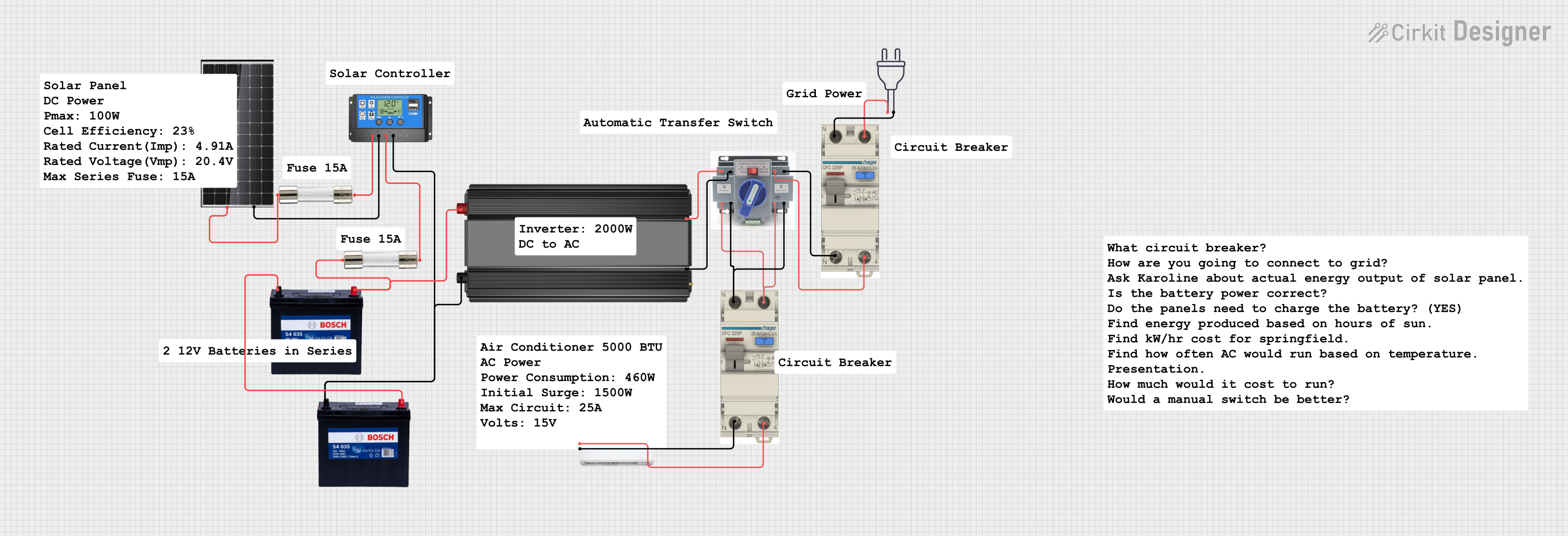
 Open Project in Cirkit Designer
Open Project in Cirkit Designer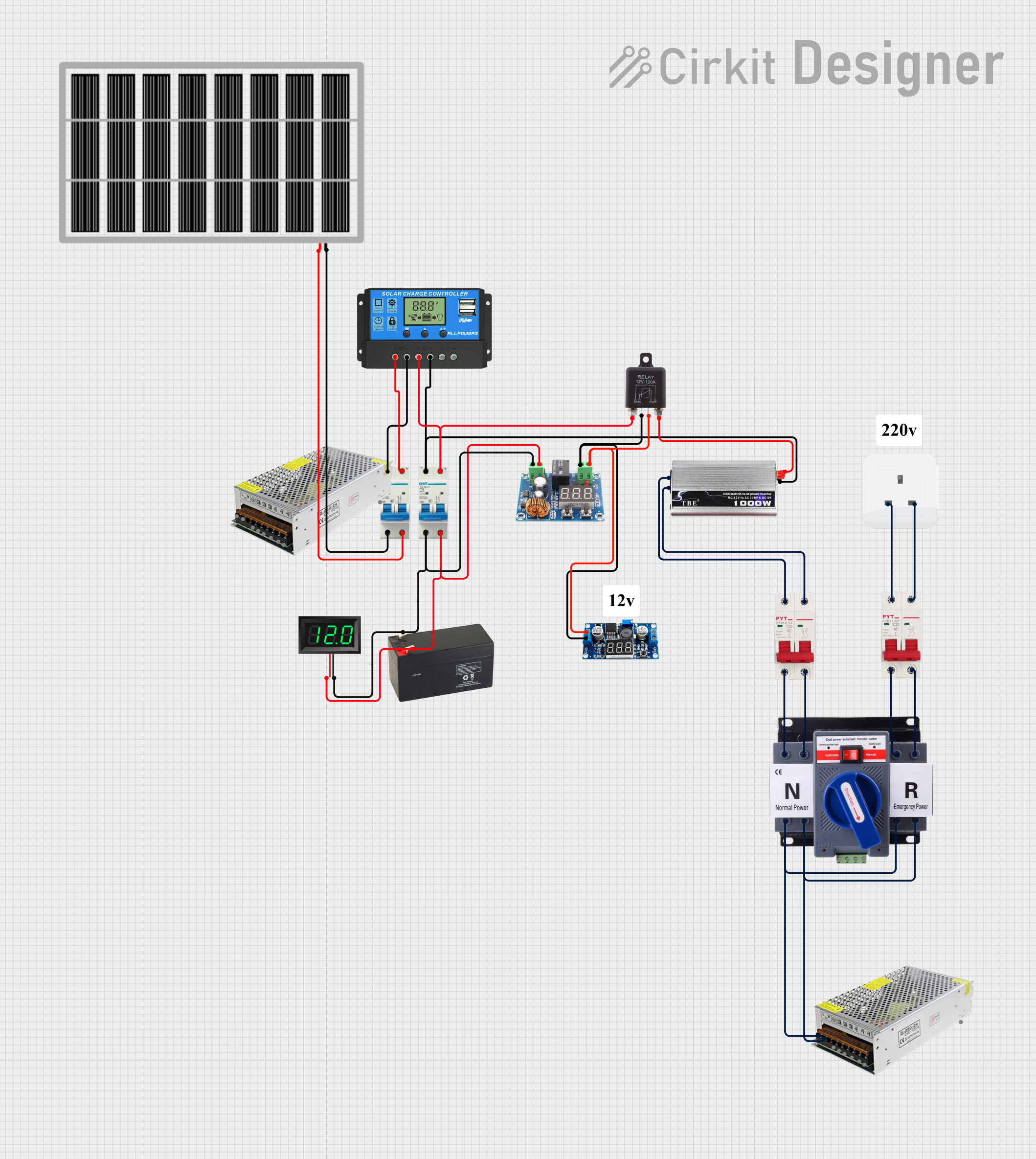
 Open Project in Cirkit Designer
Open Project in Cirkit Designer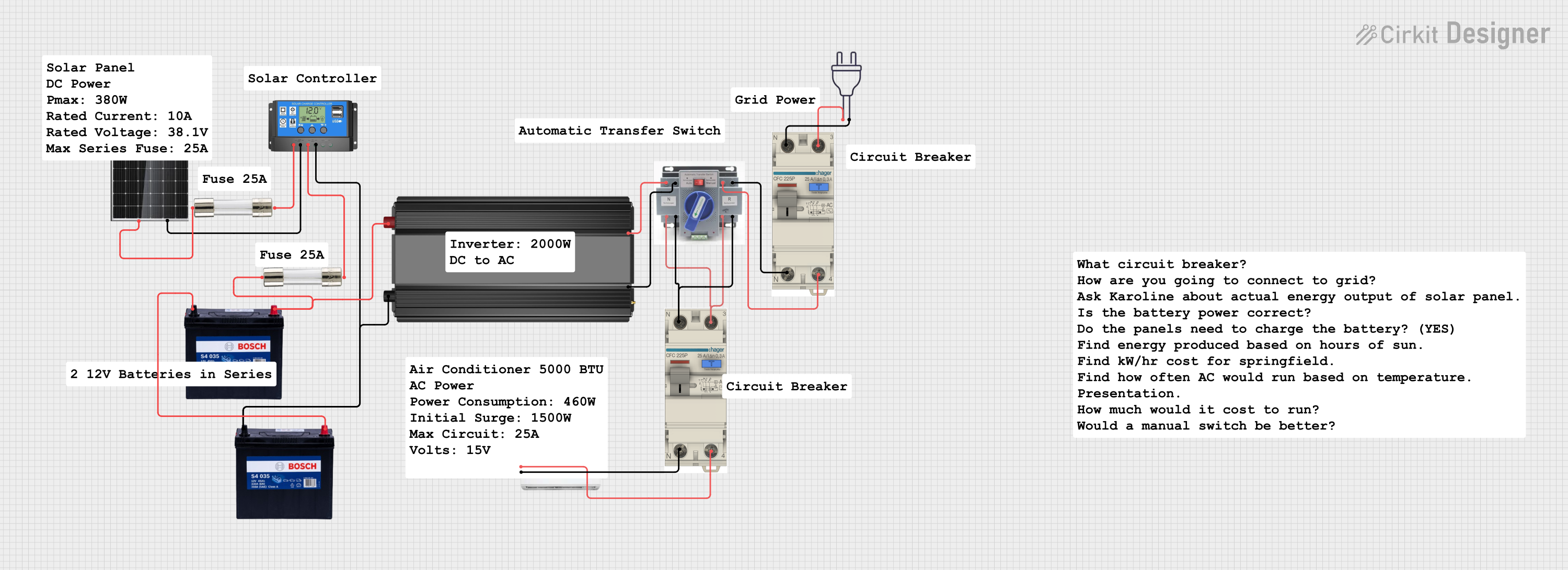
 Open Project in Cirkit Designer
Open Project in Cirkit DesignerExplore Projects Built with 16A AC BREAKER

 Open Project in Cirkit Designer
Open Project in Cirkit Designer
 Open Project in Cirkit Designer
Open Project in Cirkit Designer
 Open Project in Cirkit Designer
Open Project in Cirkit Designer
 Open Project in Cirkit Designer
Open Project in Cirkit DesignerCommon Applications and Use Cases
- Residential and commercial electrical systems for circuit protection.
- Industrial machinery to prevent damage from electrical faults.
- Power distribution panels in buildings.
- Protection of sensitive electronic equipment from overcurrent conditions.
Technical Specifications
The following table outlines the key technical details of the 16A AC Breaker:
| Parameter | Value |
|---|---|
| Rated Current | 16A |
| Rated Voltage | 230V AC |
| Frequency | 50/60 Hz |
| Breaking Capacity | 6 kA |
| Number of Poles | 1P (Single Pole) |
| Trip Curve | Type C |
| Operating Temperature | -5°C to +40°C |
| Mounting Type | DIN Rail |
| Dimensions (L x W x H) | 18mm x 75mm x 80mm |
| Compliance Standards | IEC 60898-1 |
Pin Configuration and Descriptions
The 16A AC Breaker does not have traditional pins but instead features terminal connections for input and output wiring. The table below describes these terminals:
| Terminal | Description |
|---|---|
| Line (Input) | Connects to the incoming live wire from the power source. |
| Load (Output) | Connects to the outgoing live wire to the protected circuit. |
Usage Instructions
How to Use the 16A AC Breaker in a Circuit
Mounting the Breaker:
- Install the breaker on a standard DIN rail in the distribution panel.
- Ensure the breaker is securely locked into place.
Wiring the Breaker:
- Connect the Line (Input) terminal to the live wire from the power source.
- Connect the Load (Output) terminal to the live wire leading to the circuit or device to be protected.
- Ensure all connections are tight and secure to prevent arcing or loose contacts.
Testing the Breaker:
- After installation, switch the breaker to the "ON" position.
- Test the breaker by simulating an overload or short circuit (if safe to do so) to ensure it trips correctly.
Resetting the Breaker:
- If the breaker trips, identify and resolve the cause of the fault.
- Once resolved, switch the breaker to the "OFF" position and then back to "ON" to reset it.
Important Considerations and Best Practices
- Always ensure the breaker is rated for the current and voltage of your circuit.
- Do not exceed the 16A current rating, as this may cause the breaker to trip unnecessarily.
- Use appropriate wire sizes for the connected circuit to prevent overheating.
- Periodically inspect the breaker for signs of wear, damage, or loose connections.
- Ensure compliance with local electrical codes and standards during installation.
Troubleshooting and FAQs
Common Issues and Solutions
| Issue | Possible Cause | Solution |
|---|---|---|
| Breaker trips frequently | Overload or short circuit in the connected circuit. | Check the circuit for faults and reduce the load. |
| Breaker does not trip during a fault | Faulty breaker or incorrect installation. | Verify wiring and replace the breaker if necessary. |
| Breaker cannot be reset | Persistent fault in the circuit. | Inspect and resolve the fault before resetting. |
| Breaker feels warm during operation | High current flow or loose connections. | Ensure connections are tight and check the load. |
FAQs
Can I use the 16A AC Breaker for DC circuits?
No, this breaker is designed specifically for AC circuits. Using it in a DC circuit may result in improper operation or damage.What is the significance of the Type C trip curve?
The Type C trip curve means the breaker trips at 5-10 times its rated current, making it suitable for circuits with moderate inrush currents, such as those with motors or transformers.How do I know if the breaker is faulty?
If the breaker does not trip during a fault or cannot be reset after resolving a fault, it may be defective and should be replaced.Can I install the breaker myself?
While it is possible, it is recommended to have a licensed electrician perform the installation to ensure safety and compliance with electrical codes.